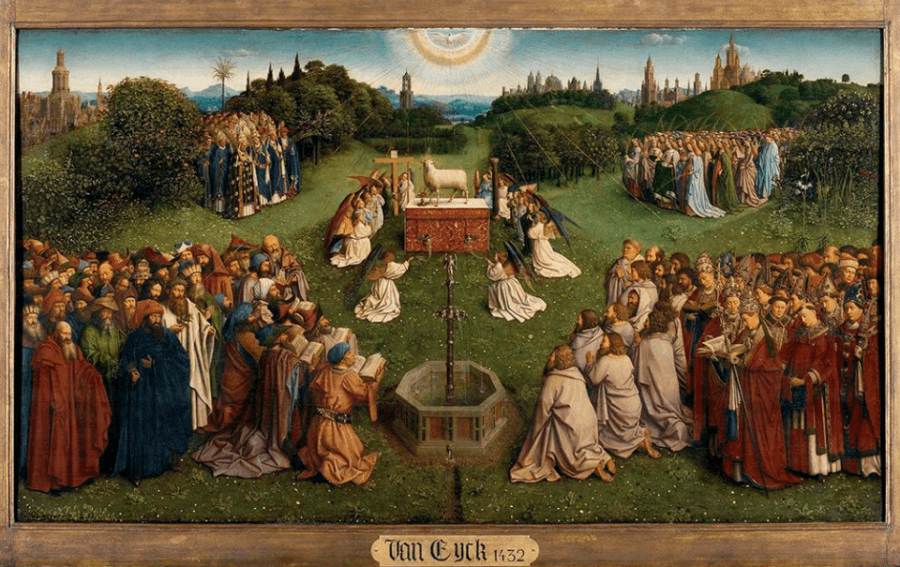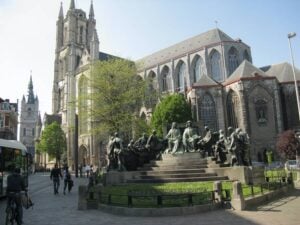Chilling Secrets Unearthed: Cathedral in Belgium Reveals Macabre Wall of Human Bones
But in the case of the dig in Ghent, instead of being hidden away, the bones were used to create an entirely new wall structure.
According to a newsletter sent out by the excavation team, there were no children’s bones found to be used for the wall’s construction. Not a surprise, the team wrote, as children’s bones would’ve been too fragile to use as material. Furthermore, back then children’s graves received much less attention than those of adults.
The team also explained that the structure consisted of mostly thigh and shin bones, likely due to a lack of time during collection of the bones.

Saint Bavo’s CathedralThe Mystic Lamb painting, located within the church.
“When clearing graves, people often hurried and did not bother collecting smaller or fragile bones such as vertebrae, ribs, bones from hands and feet,” the team wrote. “So a selection of skulls and long bones emerged.”
Saint Bavo’s is located in Ghent, which is about 31 miles northwest of Brussels. Before the current cathedral’s construction in the 15th and 16th centuries, the site was originally occupied by the site of a 10th-century church and then a 12th-century Romanesque church.
So there’s clearly a lot of history — and apparently bones — to be uncovered at such a remarkable location.
Unlike the famous French Catacombs, which is now a popular tourist attraction, the bones found underneath the Saint Bavo’s Cathedral will be removed for further analysis.
After reading about the wall made of 500-year-old bones discovered in Belgium, learn about the bones of St. Peter that were found inside a 1,000-year-old church. Then find out why babies in ancient Ecuador were buried with helmets made from skulls of other children.













